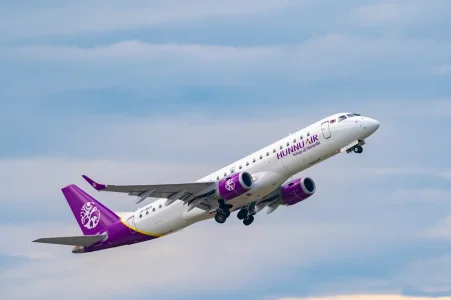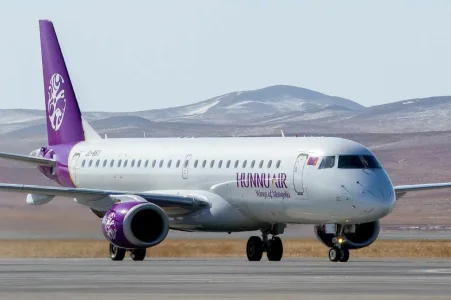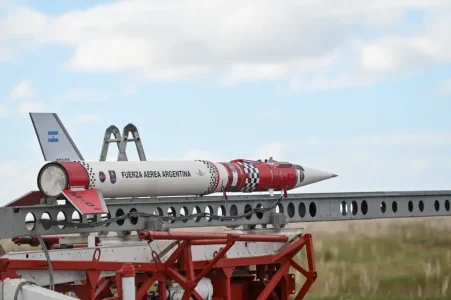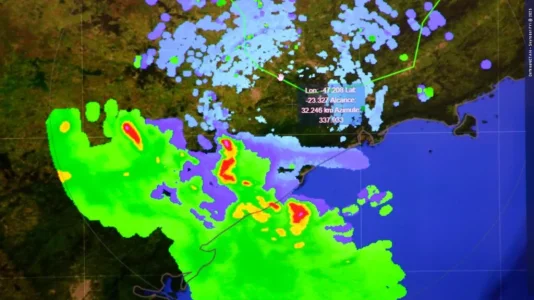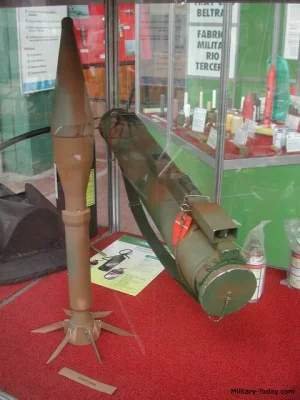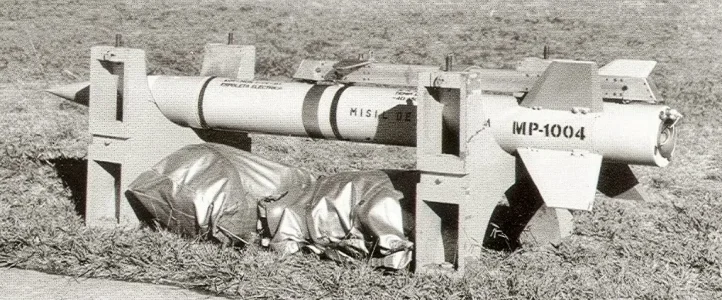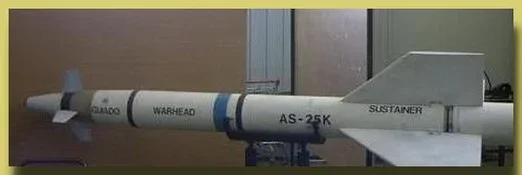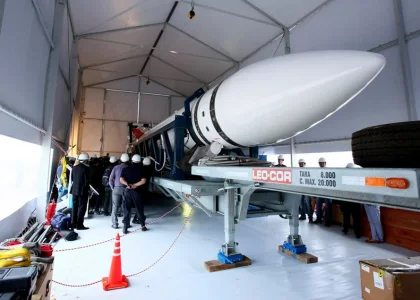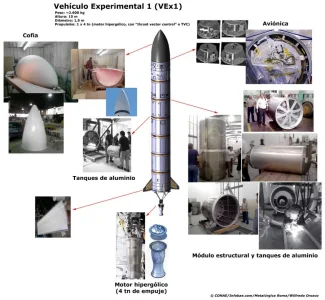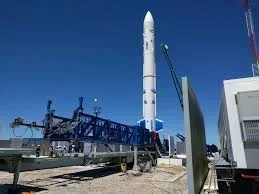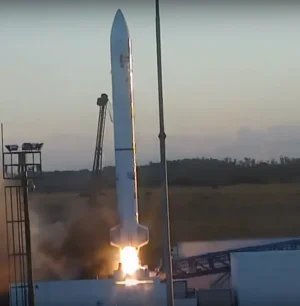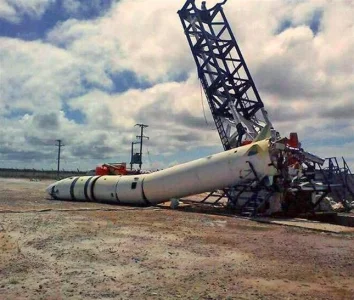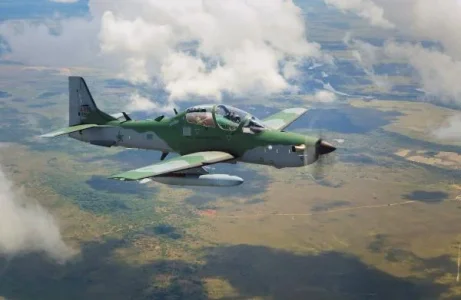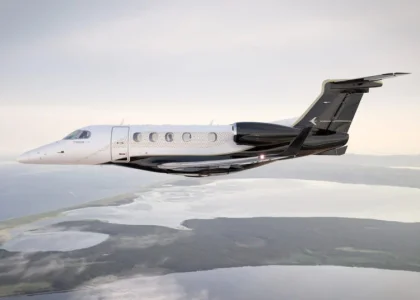- Joined
- Jul 3, 2024
- Messages
- 1,734
- Likes
- 2,294
Lula da Silva, President of Brazil, announced last week that his government will negotiate with Embraer and the National Bank for Economic and Social Development (BNDES) a financing program to enable Angola to acquire three KC-390 Millennium aircraft.
The announcement came during a visit by Angolan President Joao Lourenco to Brazil, where he also announced that assistance will be provided to modernize the African country's A-29 Super Tucano fleet.
The KC-390 currently operates in the air forces of Brazil, Portugal, and Hungary, and has been selected by the Netherlands, Austria, the Czech Republic, Sweden, Slovakia, South Korea, and an undisclosed customer.
The Angolan fleet, meanwhile, includes several Soviet-made models, with the eight Antonov An-12s being the most similar in both capability and operational profile to the KC-390 Millennium.
If the matter progresses, Embraer could strengthen its position in the African market as a provider of military solutions. A few weeks ago, it signed a memorandum of understanding with Denel, South Africa's leading defense company, seeking to incorporate the KC-390 into that country's Armed Forces.
The KC-390 has a payload capacity of up to 26 tons and a speed of 470 knots. It can be used in tactical missions, medical evacuations, in-flight refueling, firefighting, and special operations.
It is capable of operating on unpaved runways and in extreme climates, making it an ideal platform for African conditions.
During the first part of May, the aircraft toured the United States to demonstrate its capabilities to representatives of the United States Armed Forces, members of Congress, and the media.
Embraer also showcased its model at the DSEI convention center in Japan between May 21 and 23 as part of its awareness campaign.

 a21.com.mx
a21.com.mx
Hunnu Air's Embraer E-195 E2 made its inaugural flight between Ulaanbaatar, the capital of Mongolia, and Beijing Daxing International Airport, China, becoming the first model of its kind to operate a route to mainland China.
“The launch of this route with our new E195 E2 reflects Hunnu Air's determination to expand our international network and symbolizes the deepening of friendship and collaboration between Mongolia and China in this new era,” said Munkhjargal Purevjal, CEO of the airline.
“Since 2019, we have operated first-generation E190 aircraft, and the addition of the E195 E2 is the perfect upgrade to meet the growing demand for both domestic and international travel. We look forward to the E2 becoming the foundation for our long-term growth, allowing us to offer unparalleled connectivity throughout the region,” he added.
The flight was operated by the first of two new models the Mongolian airline received in April. These models will be used to increase capacity to Haikou and Sanya, China, and Phu Quoc, Vietnam, as well as expand its services to Japan, India, and South Korea, and introduce scheduled flights to Tashkent, Uzbekistan.
View: https://www.youtube.com/watch?v=J01-2chF5Lk&t=2s
Hunnu Air's E195 E2 is configured in a two-class layout with 136 seats in Embraer's renowned 2-2 arrangement, meaning "no passenger will have to endure the dreaded middle seat."
"We strongly support Hunnu Air in the success of this key corridor. The right-sized E2 will allow Hunnu Air to grow profitably, unlocking Mongolia's enormous potential and strengthening its growing network in Asia," said Martyn Holmes, Chief Commercial Officer of Embraer Commercial Aviation.
The first Embraer aircraft to enter service in Mongolia was in 2018, an ERJ 145.

 a21.com.mx
a21.com.mx
Embraer will participate in the 17th Langkawi International Maritime and Aerospace Exhibition (LIMA), which will be held from May 20 to 24, 2025, in Langkawi, Malaysia. During the event, the company will showcase the KC-390 Millennium, a multi-mission tactical transport aircraft that has been deployed by various air forces around the world. The aircraft will be available for display both at booth C013 and in the outdoor static display area.
This presentation reinforces Embraer's interest in expanding its presence in Southeast Asia within the defense sector.
Bosco da Costa Junior, President and CEO of Embraer Defense & Security, stated that it is an honor to have the KC-390 at LIMA 2025.
“It is a next-generation military air transport with multi-mission capability, interoperability, reliability, low life-cycle cost, and high performance at its core. The aircraft is gaining ground worldwide, and we look forward to expanding our presence in the Asia-Pacific region,” Da Costa Junior emphasized.
The KC-390 is an aircraft designed to respond to today's operational challenges. It can reach a speed of 470 knots and carry up to 26 tons of cargo, outperforming other mid-size cargo aircraft. It is powered by IAE V2500 engines and was introduced into service in 2019.
Its design allows for a wide variety of missions, such as cargo or troop transport and offloading, medical evacuations, search and rescue, humanitarian missions, firefighting, and in-flight refueling.
The aircraft can operate in various geographical and climatic conditions in Southeast Asia, including unpaved terrain such as compacted earth or gravel. Its design allows it to operate reliably in humid, hot, cold, or dry environments. It is equipped with sensors, communications systems, and an integrated electronic warfare system, giving it connectivity and self-protection capabilities.
According to Embraer, the KC-390 achieved a 99% mission completion rate and maintains low operating costs. Its design from the outset considered the ability to perform multiple roles and facilitate interoperability with various armed forces. It is currently in service in Brazil, Portugal, and Hungary.
It has also been ordered by South Korea, the Netherlands, Austria, the Czech Republic, and an undisclosed customer. Sweden and Slovakia recently announced their selection of this aircraft for their national defense.
In the Southeast Asian region, Embraer already maintains a presence through the operation of aircraft such as the A-29 Super Tucano in Indonesia and the Philippines. These models are used for advanced training and close air support missions.
The company also has a regional office in Singapore, as well as a spare parts and components distribution center. Over the past twenty years, Embraer has designed and certified 21 aircraft platforms, demonstrating its development capabilities in the aerospace industry.

 a21.com.mx
a21.com.mx
The announcement came during a visit by Angolan President Joao Lourenco to Brazil, where he also announced that assistance will be provided to modernize the African country's A-29 Super Tucano fleet.
The KC-390 currently operates in the air forces of Brazil, Portugal, and Hungary, and has been selected by the Netherlands, Austria, the Czech Republic, Sweden, Slovakia, South Korea, and an undisclosed customer.
The Angolan fleet, meanwhile, includes several Soviet-made models, with the eight Antonov An-12s being the most similar in both capability and operational profile to the KC-390 Millennium.
If the matter progresses, Embraer could strengthen its position in the African market as a provider of military solutions. A few weeks ago, it signed a memorandum of understanding with Denel, South Africa's leading defense company, seeking to incorporate the KC-390 into that country's Armed Forces.
The KC-390 has a payload capacity of up to 26 tons and a speed of 470 knots. It can be used in tactical missions, medical evacuations, in-flight refueling, firefighting, and special operations.
It is capable of operating on unpaved runways and in extreme climates, making it an ideal platform for African conditions.
During the first part of May, the aircraft toured the United States to demonstrate its capabilities to representatives of the United States Armed Forces, members of Congress, and the media.
Embraer also showcased its model at the DSEI convention center in Japan between May 21 and 23 as part of its awareness campaign.

Gestiona gobierno de Brasil venta de aviones KC-390 Millenium a Angola
Lula da Silva, presidente de Brasil, anunció la semana pasada que su gobierno gestionará con Embraer y el Banco Nacional
 a21.com.mx
a21.com.mx
Hunnu Air's Embraer E-195 E2 made its inaugural flight between Ulaanbaatar, the capital of Mongolia, and Beijing Daxing International Airport, China, becoming the first model of its kind to operate a route to mainland China.
“The launch of this route with our new E195 E2 reflects Hunnu Air's determination to expand our international network and symbolizes the deepening of friendship and collaboration between Mongolia and China in this new era,” said Munkhjargal Purevjal, CEO of the airline.
“Since 2019, we have operated first-generation E190 aircraft, and the addition of the E195 E2 is the perfect upgrade to meet the growing demand for both domestic and international travel. We look forward to the E2 becoming the foundation for our long-term growth, allowing us to offer unparalleled connectivity throughout the region,” he added.
The flight was operated by the first of two new models the Mongolian airline received in April. These models will be used to increase capacity to Haikou and Sanya, China, and Phu Quoc, Vietnam, as well as expand its services to Japan, India, and South Korea, and introduce scheduled flights to Tashkent, Uzbekistan.
View: https://www.youtube.com/watch?v=J01-2chF5Lk&t=2s
Hunnu Air's E195 E2 is configured in a two-class layout with 136 seats in Embraer's renowned 2-2 arrangement, meaning "no passenger will have to endure the dreaded middle seat."
"We strongly support Hunnu Air in the success of this key corridor. The right-sized E2 will allow Hunnu Air to grow profitably, unlocking Mongolia's enormous potential and strengthening its growing network in Asia," said Martyn Holmes, Chief Commercial Officer of Embraer Commercial Aviation.
The first Embraer aircraft to enter service in Mongolia was in 2018, an ERJ 145.

Debuta avión E-195 E2 de Embraer en una ruta entre Mongolia y China continental
El Embraer E-195 E2 de la aerolínea Hunnu Air realizó su vuelo inaugural entre Ulán Bator, capital de Mongolia, y
 a21.com.mx
a21.com.mx
Embraer will participate in the 17th Langkawi International Maritime and Aerospace Exhibition (LIMA), which will be held from May 20 to 24, 2025, in Langkawi, Malaysia. During the event, the company will showcase the KC-390 Millennium, a multi-mission tactical transport aircraft that has been deployed by various air forces around the world. The aircraft will be available for display both at booth C013 and in the outdoor static display area.
This presentation reinforces Embraer's interest in expanding its presence in Southeast Asia within the defense sector.
Bosco da Costa Junior, President and CEO of Embraer Defense & Security, stated that it is an honor to have the KC-390 at LIMA 2025.
“It is a next-generation military air transport with multi-mission capability, interoperability, reliability, low life-cycle cost, and high performance at its core. The aircraft is gaining ground worldwide, and we look forward to expanding our presence in the Asia-Pacific region,” Da Costa Junior emphasized.
The KC-390 is an aircraft designed to respond to today's operational challenges. It can reach a speed of 470 knots and carry up to 26 tons of cargo, outperforming other mid-size cargo aircraft. It is powered by IAE V2500 engines and was introduced into service in 2019.
Its design allows for a wide variety of missions, such as cargo or troop transport and offloading, medical evacuations, search and rescue, humanitarian missions, firefighting, and in-flight refueling.
The aircraft can operate in various geographical and climatic conditions in Southeast Asia, including unpaved terrain such as compacted earth or gravel. Its design allows it to operate reliably in humid, hot, cold, or dry environments. It is equipped with sensors, communications systems, and an integrated electronic warfare system, giving it connectivity and self-protection capabilities.
According to Embraer, the KC-390 achieved a 99% mission completion rate and maintains low operating costs. Its design from the outset considered the ability to perform multiple roles and facilitate interoperability with various armed forces. It is currently in service in Brazil, Portugal, and Hungary.
It has also been ordered by South Korea, the Netherlands, Austria, the Czech Republic, and an undisclosed customer. Sweden and Slovakia recently announced their selection of this aircraft for their national defense.
In the Southeast Asian region, Embraer already maintains a presence through the operation of aircraft such as the A-29 Super Tucano in Indonesia and the Philippines. These models are used for advanced training and close air support missions.
The company also has a regional office in Singapore, as well as a spare parts and components distribution center. Over the past twenty years, Embraer has designed and certified 21 aircraft platforms, demonstrating its development capabilities in the aerospace industry.

Exhibirá Embraer el KC-390 Millennium en en feria aeroespacial de Malasia
Embraer participará en la 17ª edición de la Exposición Internacional Marítima y Aeroespacial de Langkawi (LIMA), que se celebrará del
 a21.com.mx
a21.com.mx



